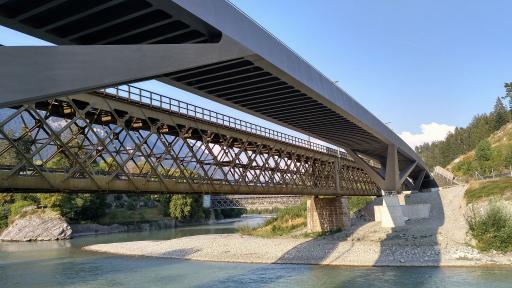«Sustainable solutions struggle to find acceptance in day-to-day politics»
There is one point on which (nearly) everyone agrees – urgent action is required to reform pensions. But people disagree about the precise nature of the reforms and how they should be implemented. Christoph Schaltegger, professor and dean of the Faculty of Economics and Management at the University of Lucerne, explains why stabilising and modernising pensions is so difficult in Switzerland and offers some possible solutions.
Interview: Daniel Schriber
Mr Schaltegger, let’s start with what’s happening right now. The coronavirus crisis has had a significant impact on various aspects of society. Does this include pensions too?
Absolutely. Although we don’t know yet how severe the economic impact of the coronavirus crisis will be, the labour market will certainly be affected. Higher unemployment will result in lower wage contributions – which will, in turn, have a negative effect on pensions.
And there are plenty of other challenges as well. According to the latest figures from the SIA Safety Monitor, a third of the Swiss population does not feel secure when it comes to pensions. Does this surprise you?
No, it doesn’t. There has long been a need for action on pensions. It has been a topic of political discussion time and again since the mid-1990s. In particular, the financial situation of the OASI has clearly deteriorated.

Ranked by the NZZ as one of the most influential economists in Switzerland: Christoph Schaltegger.
Because we’re getting older...
Precisely. The demographic nature of this trend is well known – low birth rates and rising life expectancy. The challenge will grow in the years ahead as the baby boom generation reaches retirement age. The lack of parity between pensioners and the working population will continue to increase.
What does this mean?
We’re not only healthier nowadays, but we’re also living longer. This is a good thing, but it means we will not be able to maintain our current level of benefits over the long term. We must reduce benefits or we have to change how they are financed – or a combination of the two.
People seem to be aware of the problem, but there has been little forward progress on the political level. Why is that?
People in Switzerland are well informed and realistic enough to understand that simply maintaining the level of benefits will become more and more expensive over the long term. It may at first glance seem odd that politicians have not yet come up with a solution, but it doesn’t surprise me.
«Pension policies affect all generations, but the horse trading tends to be done by the current generation.»
Why have politicians failed to address these important questions?
Economists refer to this as a ‘time inconsistency’. Pension policies affect all generations, but the horse trading tends to be done by the current generation. They are the only ones sitting at the table and making the decisions. As a result, sustainable, balanced solutions that are fair to all generations struggle to find acceptance in day-to-day politics. Politicians prefer to defer funding for social insurance and burden future tax and contribution payers.
Because everyone looks after their own interests?
That’s one problem. The other is the war of attrition being waged in connection with pensions. In particular, we see this in connection with OASI, which is characterised by, among other things, a strong redistributive effect. So there are people who pay more into the system than they ultimately receive – and vice-versa. When OASI reforms are discussed, both sides naturally hope that the other side will assume a greater share of the burden in future. However, this sort of attitude means we will have to wait a long time for successful reforms. Everyone has to be willing to make a contribution to a future solution.
Is an increase in the pension age for women and men inevitable?
If a society says a retirement age of 64/65 is sacrosanct, this is feasible in principle, but it does not make sense in my view. Such a decision would have to be realised through additional financial expenditure – that is the only way to make up for the demographic trend. However, in my view the aim should be to find a balance between the sacrifices people have to make. This means we need to make certain changes to both benefits and financing. To come back to your question, given the current demographic trend, it will be necessary to increase the retirement age.
Is the job market prepared for such a measure?
I am confident that it is. Older employees are extremely well integrated in the job market. The percentage of the older population still working has been growing for years and is very high compared with other countries. In the coming years, the demographic trend will lead to a significant shortage of labour supply, which should increase the demand for older workers.
But do we really want to work until we’re too old and weak to enjoy our retirement?
This concern is understandable, but unfounded. Thanks to growing prosperity and medical advances, life expectancy in Switzerland rose sharply over the course of the 20th century. Happily, people are not only living longer but are staying healthier for longer too. Thus, 65 should not be seen as a threshold after which health problems suddenly increase.
«There are many good reasons to be flexible about the retirement age.»
According to the SIA Safety Monitor, about 53 percent of workers say there is an incentive to work longer if they are able to gradually reduce their employment level. Is that realistic?
There are many good reasons to be flexible about the retirement age. The profiles on the job market may simply need to be adapted.
What do you mean by that?
Although physical and cognitive performance reach their peak at a relatively young age, other factors, such as experience, leadership skills and judgement, continue to increase over our lives. In other words, younger people are nimble, flexible and up-to-date on the latest methods, while older employees have greater experience and knowledge. Here too, if we want part-time work to remain attractive beyond the official retirement age, then we must provide the appropriate incentives.
According to the SIA Safety Monitor, 38 percent of the population would like to give more weight to a fully funded pension system, while 26 percent say they prefer OASI’s pay-as-you-go system. Are there still arguments in favour of both systems?
Both systems have advantages and disadvantages. If you separate the two systems clearly, then you can look at their specific features and weigh them against one another. However, I would advise against combining the two systems. For example, if you try to integrate a redistributive mechanism with a fully funded system, it will result in a lack of transparency. This would also make things difficult to control politically and lead to disappointment.
Many specialists appear to agree on the theory of what it would take to fix pensions. When it comes to the reality, however, many efforts have failed due to political and social rifts. Now, every step in the right direction requires a ‘gift’ for the other party. Given this situation, is it possible to save pensions?
This is a problem in Switzerland. It is almost impossible nowadays to get things done without some horse trading. To some extent this is normal, but it becomes a problem when completely different political issues become mixed together. Such counter-deals have a prejudicial effect, with people no longer willing to support a decision without receiving something in return. The result is a political ‘bazaar’ that is no longer serious and blocks politics over the long term.
About the interviewee
Christoph A. Schaltegger is professor of political economics and dean of the Faculty of Economics and Management at the University of Lucerne. He also teaches public finances at the University of St. Gallen. Schaltegger is placed third in this year’s NZZ ranking of the most influential economists in Switzerland. He is one of the few economics professors who regularly comments on specific political questions.
Swiss pensions in flux
Current situation:
The Federal Council has decided on two separate pension reforms.
- OASI: On 28 August 2019, the Federal Council adopted the proposal on pension reform (AHV 21). The aim is to stabilise OASI financing over the medium term and to maintain pension levels. Among other things, it sets the same retirement age of 65 for both men and women, and increases the value-added tax starting in 2022. The proposal is currently being debated in parliament.
- Occupational pensions (OPA): The social partner dialogue on reforming the second pillar between the Confederation of Swiss Employers (SAV), the Swiss Trade Association (SGV), the Swiss Trade Union Federation (SGB) and Travail.Suisse took place between April 2018 and June 2019. On 2 July 2019, SAV, SGB and Travail.Suisse (excluding SGV) proposed reducing the OPA conversion rate to 6.0 percent in one step, and introducing a pension supplement to compensate the transitional generation for the conversion rate reduction. The Federal Council conducted consultations based on this proposal. The consultation deadline was extended to 29 May 2020 due to the coronavirus crisis. The Federal Council’s decision is currently awaited.
Development:
2019: Approval of the Federal Act on Tax Reform and OASI Funding (OASI TRAF) in a referendum
2018: Rejection of the 2020 pension reform by the people
2010: Rejection of a reduction of the OPA minimum conversion rate
2010: Failure of the 11th OASI revision (second attempt) in parliament
2005: Increase in the retirement age for women to 64
2004: Rejection of the 11th OASI revision (first attempt) by the people
2001: Increase in the retirement age for women to 63
1999: Increase in VAT by 1 percentage point to finance OASI
1993: Constitutional basis for 1 percent of VAT to go to OASI
1985: Entry into force of the mandatory portion of occupational pensions (OPA)
1972: Establishment of the three-pillar system in the federal constitution
1948: Entry into force of the federal act on OASI


